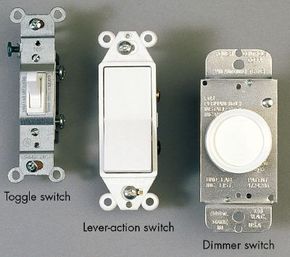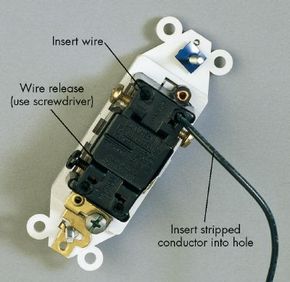Attach cover plate with screws you took out earlier, and replace circuit fuse or trip circuit breaker back on.
All switches work on the same general principles, and you can usually choose a switch with features you like best. The single-pole toggle switch is still the most popular. When the toggle switch is mounted properly, the words ON and OFF are upright on the toggle lever, and the light goes on when you flip the switch up. A variation of the traditional toggle switch is the lever-action switch, which lies almost flush with the wall. It turns the fixture on when someone pushes the top of the switch in. The push-button switch has a single button that turns the light on when pressed and off when pressed again. Some switches are available with the extra feature of a built-in neon lamp that glows when the switch is off, making it easy to locate the switch in the dark. Dimmer switches, with a dial to control the brightness, turn the light off when the dial is turned all the way down or pushed in. Some dimmer switches are like toggle types. Sliding the toggle upward increases the light's intensity; sliding it all the way down turns off the light. You can install these switches as replacements for nearly any type of switch.
Need to rewire a lamp? Check out How to Rewire a Lamp to find out how.

